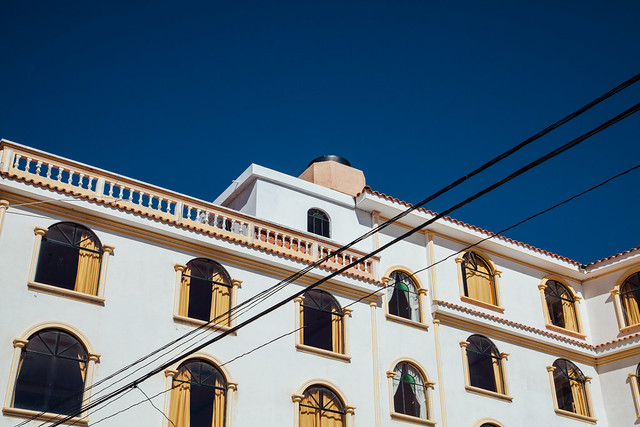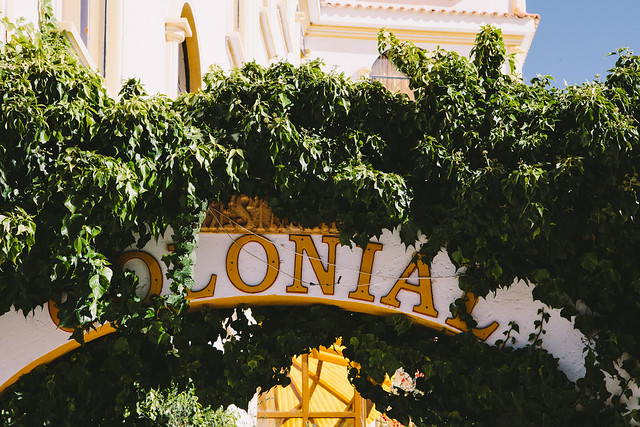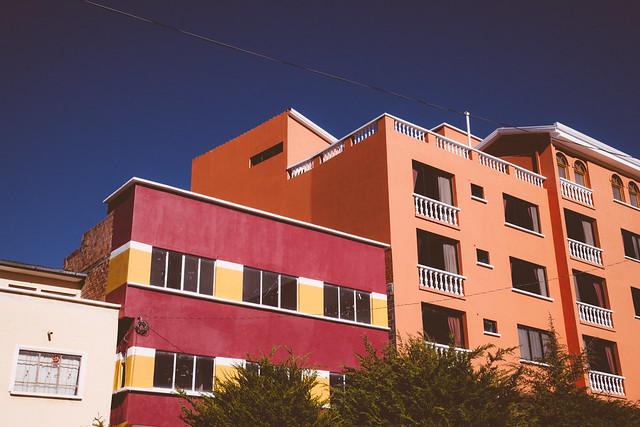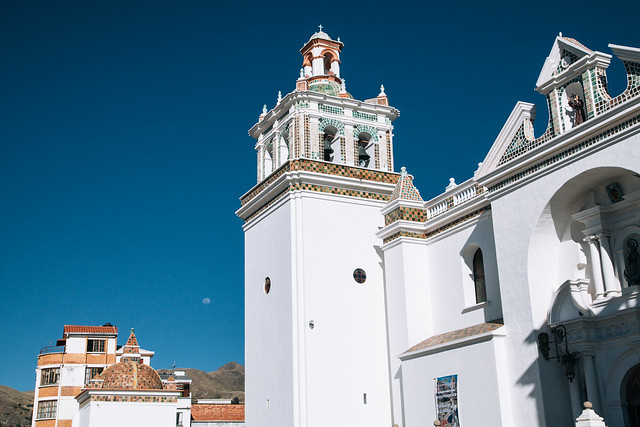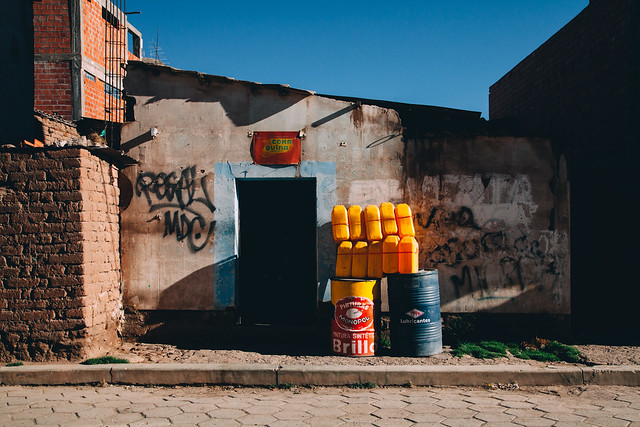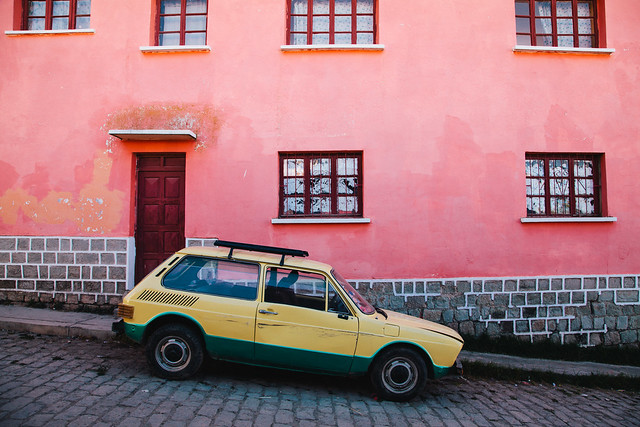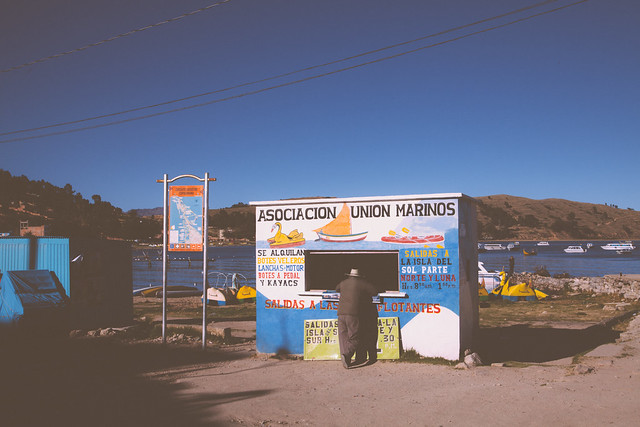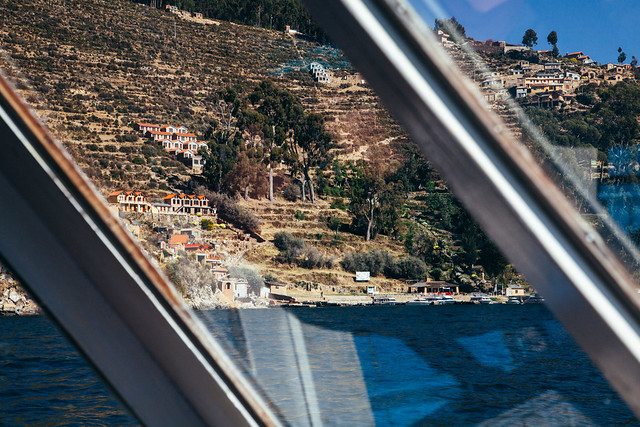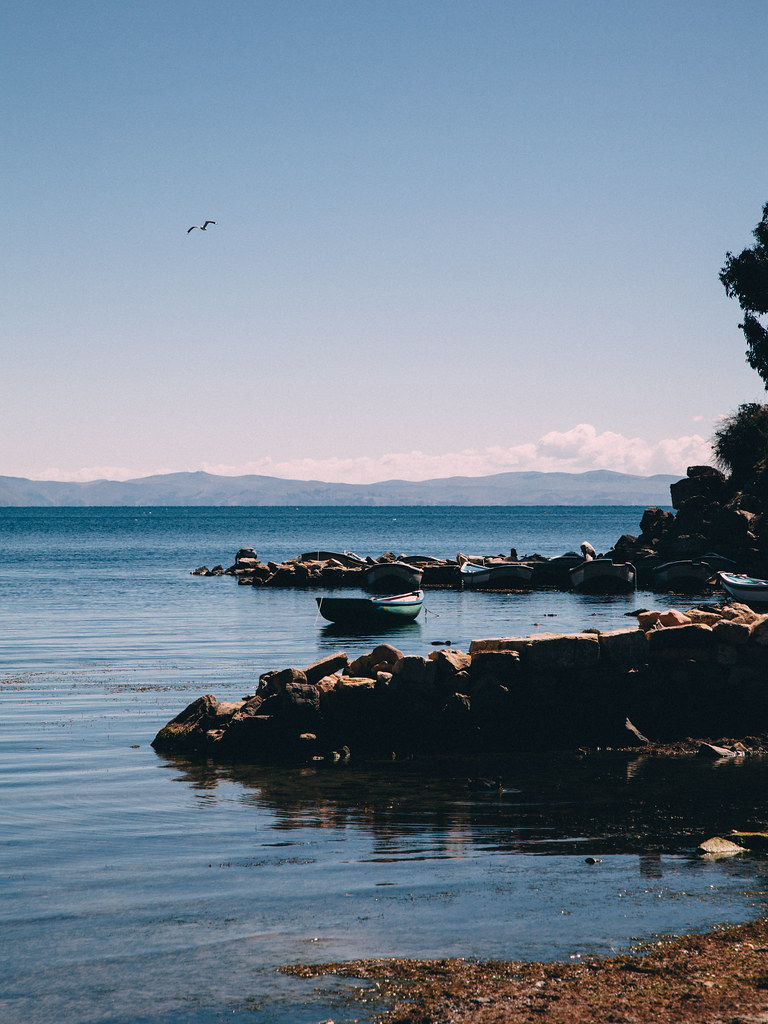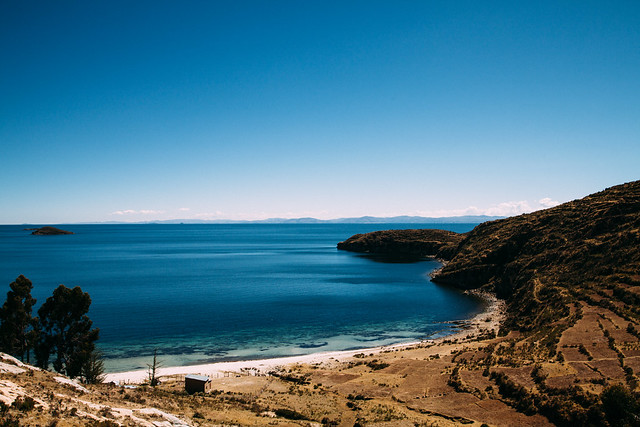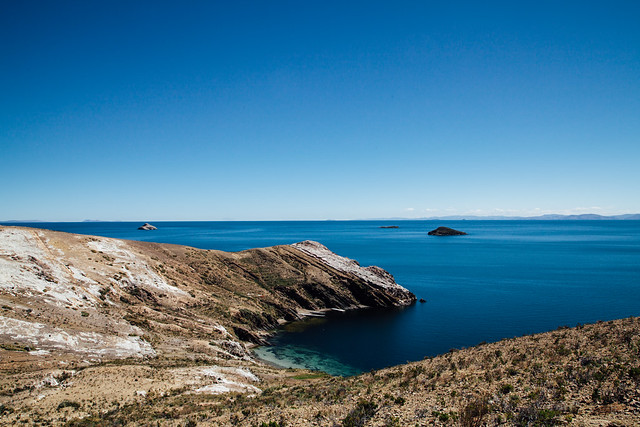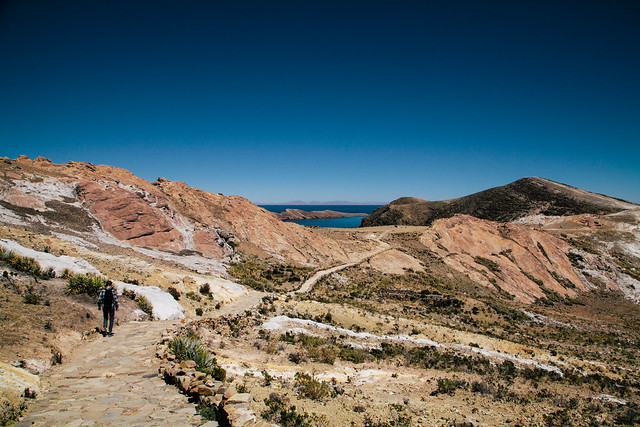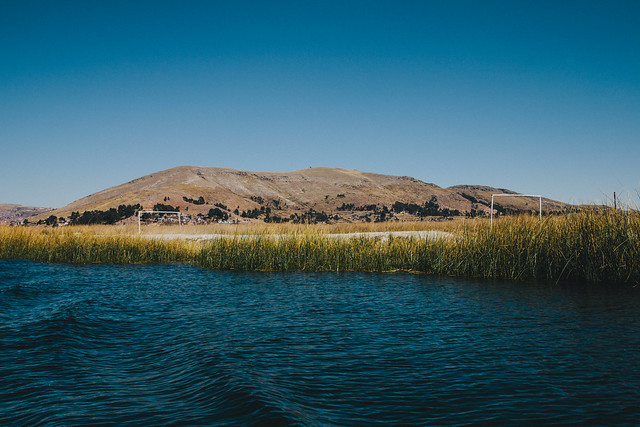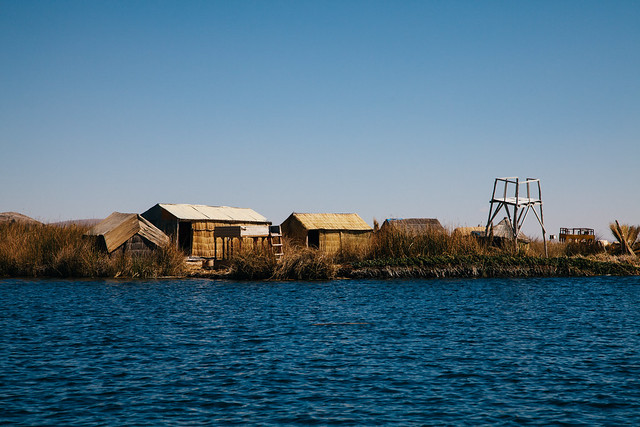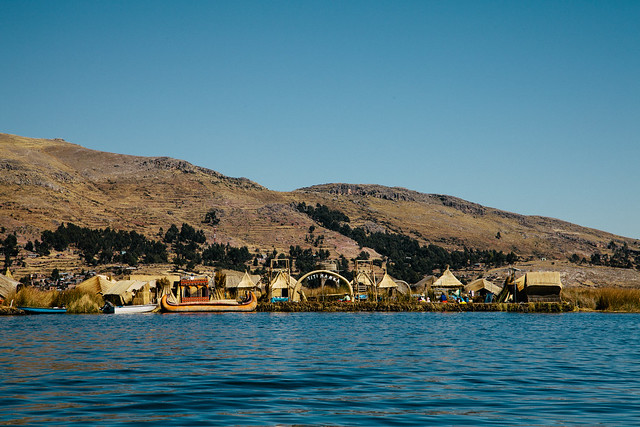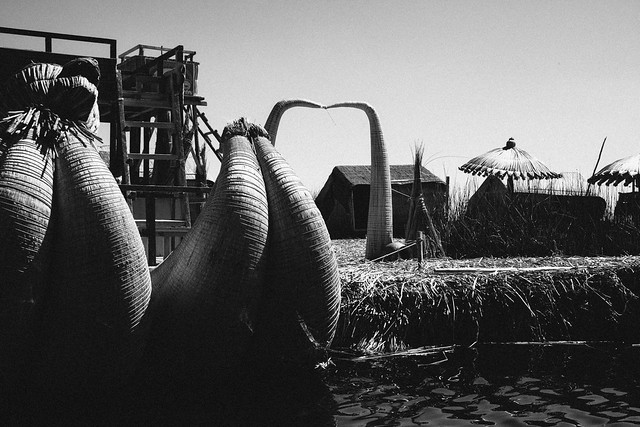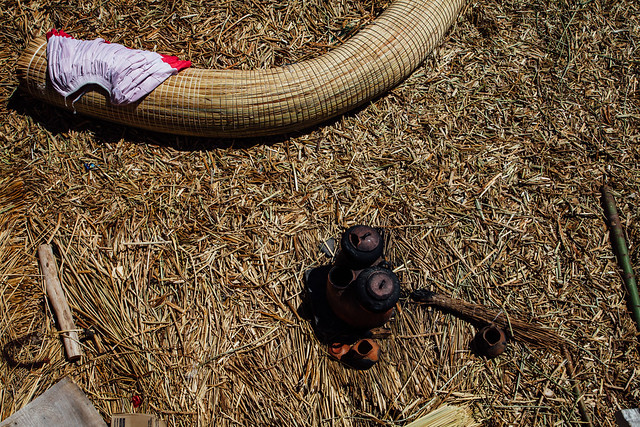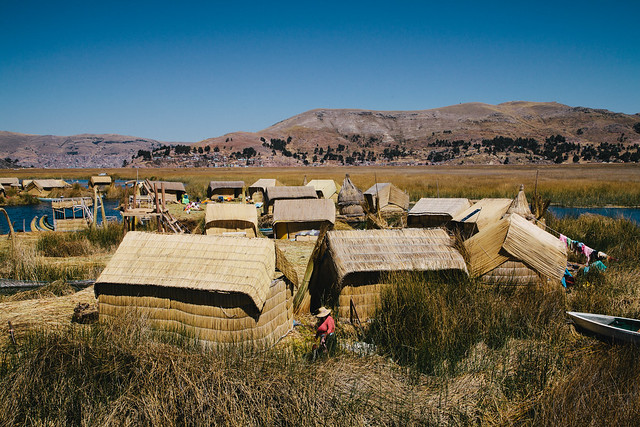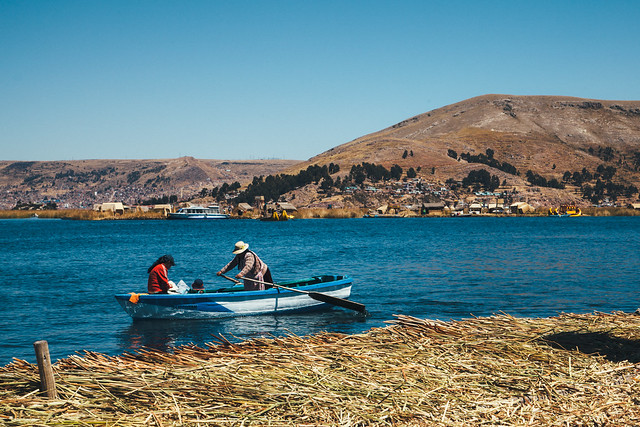Lake Titicaca
<img src="https://farm2.staticflickr.com/1572/25595414213_5d71a00de8_b.jpg" title="" alt="
It feels like just yesterday we were on Lake Titicaca, the massive body of water sandwiched between Bolivia and Peru. We had originally planned on seeing only one of the two sides (and Thom was shooting for the Peruvian side), but after chatting with some friends who visited both, we were convinced we had to see the Bolivian side (and hike across Isla del Sol), too. Although we only had two nights to spare, we somehow managed to make the tight schedule work - which allowed for a mere 26 hours in Copacabana and even fewer in Puno (14!). Was it worth it? Absolutely. For you? It depends on how you like to travel.
In the event you're in the same boat as we were - trying to decide between the two - I'll start off by saying that the Bolivian side won me over. Copacabana wasn't worth writing home about, but Isla del Sol? The 8km hike was one of the highlights of our trip. We hiked in the scorching sun (make sure you bring a bottle of sunscreen), surrounded by an ombre blue sky and water so vibrant I could hardly believe it was real. However, the setback is that the journey to the island is 4-5 hours, roundtrip - so if you have the time to spare, I'd recommend spending a night (or two) on Isla del Sol. The Uros floating islands were pretty remarkable but the islands closest to Puno kind of feel like they locals are putting on an act for the tourists. Regardless, I'm happy we had the opportunity to experience the floating islands (though I have no desire to go back).
COPACABANA, BOLIVIA | ISLA DEL SOL
Our time in Copacabana was far too short (we really could have used an extra night), but we managed to squeeze in all the important things. Like guacamole nachos (a few times), a self-guided tour of town, and a day trip to Isla del Sol (which, I'm pretty sure, is one of the only reasons anyone visits Copacabana).
We laid low the first half of the trip, wandering around town and relaxing in the hammocks at sunset, only to wake up bright and early the following morning to make sure we could secure tickets on a boat to Isla del Sol. Thom took care of the tickets while I packed up our belongings, and then we scarfed breakfast and headed to the dock to catch our boat, along with every other traveler in town. We made the two hour journey over to the island, got dumped at what felt like a makeshift dock, and then set off on our hike across the island. We had about four hours to hike, which provided more than enough time to get from point A to point B (and have a picnic and get sunburnt, in the process). We caught the late afternoon boat back to the mainland, where we had a couple of hours left to wander around Copacabana before catching the night bus to Puno, Peru.
If you're looking for a place to eat, Bambu (the guacamole nachos are divine) and La Orilla (veggie heaven) won't let you down. Oh, and Pit Stop serves up some awesome baked goods (the bread is killer). Nemo's Bar is a great place to grab a drink and El Condor & The Eagle Cafe supposedly serves up the best coffee in town (it was the only coffee I had in town, so I can't compare it to anything).
Although we originally wanted to stay at Las Olas, they were booked (that's what you get when you plan a trip as you go) so we got a last-minute room at La Aldea del Inca. It got pretty chilly at night (as in, I had to wear a base layer under my pajamas) but there were more than a few blankets so it wasn't too bad. The breakfast was awesome (all you can eat fresh fruit) and the hammocks were a delight (especially at sunset).
PUNO, PERU | UROS FLOATING ISLANDS
Just over 24 hours after we arrived in Copacabana, we caught the last bus to Puno. It wasn't ideal, as we read that crossing the border can be sketchy in the dark (you have to get off the bus, have your passport stamped, and physically walk your belongings across the border), but we didn't have any issues. Our bus wound up getting delayed and we didn't get into Puno until just before midnight (which was somewhat problematic, as we didn't have sleeping accommodations). We hopped in a taxi at the bus station and got dropped off at Tierra Viva - a hotel that came recommended by our Lonely Planet guide (a lot of travelers roll their eyes at LP guides, but it came in handy so many times during the trip) - and, lucky for us, they had a room available.
We woke up early the next morning, enjoyed a quick breakfast, and set off to the dock to catch a boat to the Uros floating islands. We had pretty high hopes for them because people! living on artificial islands made of reed! but the whole situation turned out to feel like a huge tourist scam. If we had more time in Puno, we would have booked the longer tour (it's an all day affair) to the far islands, which are apparently more authentic feeling.. but we didn't. Regardless, it was still pretty cool to see the way they do things out there (even if they were laying it on thick for the tourists). We got back from our tour and had an hour to spare before we had to be at the bus station, so we grabbed a quick lunch at Cafe Bar de la Casa del Corregidor before setting off on the most anxiety-inducing bus ride of my life. Which may have involved Thom being left at one of the stops. In the middle of no where.
But more on that next time.
TRAVEL NOTES
- On Isla del Sol, make sure you have bolivianos to pay for the fees along the hike. - Slather on the sunscreen as there is very little relief from the sweltering sun.
- Despite how warm it is during the day, it gets pretty chilly at night.
- Heads up: the Uros floating islands tours are typically lead by Spanish-speaking guides.
- Exchange all your bolivianos (or soles) at the border (you'll be hard pressed to find a better rate).
More from our South American honeymoon: Lomas de Arena Regional Park, La Paz, Bolivia, and Salar de Uyuni.
